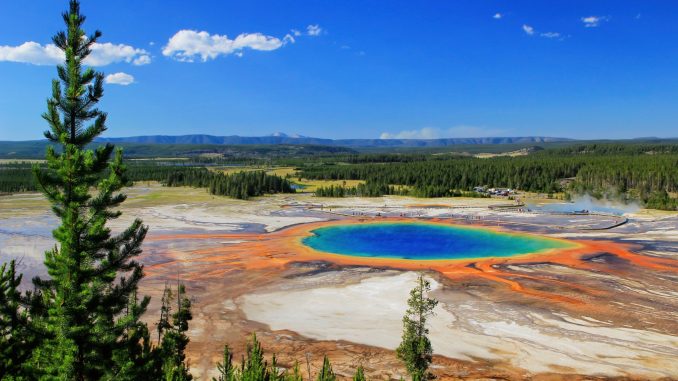
The sulphur-reducing bacteria (SRBs) or sulphate reducing bacteria as can also be called are unique because they respire by using sulphate or some other sulphur compound as an electron acceptor. It is the means by which they obtain their energy by reducing sulphur compounds. They are strict anaerobes and they can even use hydrogen, as well as simple organic acids and alcohols as electron donors for sulphate reduction.
They are the remnants of a vast array of bacteria that relied on this type of respiration to drive their metabolic processes before oxygen and oxidative respiration became the main means for cells to obtain their energy. These sulphate reducers are found in the ancient branch of the Archaea.
The sulphate reducers that have been isolated and described thus far can be divided into seven phylogenetic lineages, five within the Bacteria and two within the Archaea. Most sulphate reducers belong to approximately 23 genera, with the Gram-negative bacteria belonging to the Deltaproteobacteria and the Gram-positive bacteria within the Clostridia (Muyzer & Stams, 2008).
The main sulphur-reducing bacteria to be considered are:-
- Desulfovibrio desulfuricans
- Desulfovibrio vulgaris
- Clostridium spp.
The sulphate-, sulphur-reducing bacteria are of considerable interest in the production of biofuels when glycerol as a byproduct must be treated. They are known for causing souring by the formation of hydrogen sulphide in oil field matrices.
Desulfovibrio genus
The Desulfovibrio genus are Gram-negative, non-spore forming, mesophilic and curved rod shaped sulphate-reducing bacteria. they are all motile and polar flagella. they are common in marine, brackish and freshwater sediments, in the intestines and faeces of animals and in high-organic material environments.
Most are able to grow in anaerobic environments but some species have been identified in the presence of oxygen. They can be either chemoorganoheterotrophic or chemolithoautotropic environments.
Most are coloured colony forming which are pink or pale orange.
D. vulgaris and D. desulfuricans are the representative microorganisms. D. desulfuricans can reduce elemental sulphur in an anaerobic reactor using hydrogen as the energy source (Escobar et al., 2007). It forms stable biofilms on the surface of sulphur. All of the Desulfovibrio species are able to use a wide variety of inorganic compounds as electron acceptors (Hansen, 1994). D. sulfuricans ATCC 27774 can also use nitrate as the terminal; electron acceptor for anaerobic growth. It reduces nitrate to ammonia.
Such a fermentation is characterised by the formation of hydrogen sulphide. .
From an economic point of view, they cause biocorrosion of metals especially ferrous metals. Pipes and containers are vulnerable to this type of microorganism.
Archaeoglobus spp.
A genus of Euryarchaeota which is found in high-temperature oil fields where they contribute to oil field souring. These grow anaerobically at extremely high temperatures for bacteria between 60 and 95°C, with optimal growth at 83 °C. These are suphate-reducing archaea that couple the reduction of sulphate to sulphide with the oxidation of many different organic carbon sources including complex polymers.
The SRBs cause souring in oil reserves by forming H2S when an oil reservoir is flooded with water for example during secondary oil recovery.
Reactions
SRBs are anaerobes and metabolise sulphate. They use hydrogen or simple organic acids and alcohols as electron donors for sulfate reduction. These substrates are formed as end-products of fermentative metabolism or through chemical transformation of buried organic matter at high temperature and pressure (Shock, 1988).
SRB reactions including incomplete heterotrophic and autotrophic sulfate
reduction are:
(1) Butyric acid incomplete oxidation;
2CH3CH2CH2COOH + H2SO4 —> 4CH3COOH + H2S
(2) Propionic acid incomplete oxidation;
4CH3CH2COOH + 3H2SO4 —> 4CH3COOH + 4CO2 + 4H2O + 3H2S
(3) Lactic acid incomplete oxidation
2CH3CHOHCOOH + H2SO4 —> 2CH3COOH + 2CO2 + 2H2O + H2S
(4) Acetic acid oxidation
CH3CH2COOH + H2SO4 —-> 2CO2 + 2H2O + H2S
(5) Hydrogen oxidation
4H2 + H2SO4 —-> 4H2O + H2S
Fermentation Growth Rates
Effect of pH
The growth rate of SRBs was measured by growing them in a fermentation medium of lactate as the carbon source and sulphate. These were grown at different pH values in the range of 5.8 to 7.0. The highest growth rate was observed at pH 6.7 (Reis et al., 1992).
The Role of Hydrogen Sulphide
Hydrogen sulphide is an inhibitor of the growth of all SRBs in an anaerobic system. This toxic gas is highly problematic in anaerobic digesters where it stops methanogenesis. The gas has a direct and reversible toxicity effect on the growth of methanogens. The range for toxicity is between 50 and 220 mg S/L at pH 7 to 8. When the hydrogen sulphide concentration is 550 mg/L (16.2 mM) it completely inhibits SRB growth (Reis et al., 1992).
Hydrogen sulphide has a very high solubility in water. This solubility decreases when the temperature increases but it remains high even at 80ºC at 1g/L.
Hydrogen sulphide is highly toxic and causes corrosion of iron pipes. Different approaches are used to control hydrogen sulphide production from SRBs. There are two basic approaches:-
[1] – inhibit H2S generation
[2] – on-site elimination
A variety of biocides are available to kill SRBs such as glutaraldehyde, cocodiamines and molybdates. The other alternative to control SRBs is removal of sulphate by adding agents to bind it by forming calcium sulphate for example. Another example is bubbling oxygen through to make the environment aerobic so that SRBs simply do not continue to grow.
On-Site Elimination
On-site elimination of hydrogen sulphide from water is feasible. Iron and copper sulphate are often added to precipitate the sulphide anion as black copper sulphide.
Glutaraldehyde and copper sulphate are two agents that have been used synergistically as are nitrites and molybdates together (Nemati et al., 2001).
Nitrate Reduction
A long standing practice to control SRBs in sewage is to add nitrate. Nitrate is used by SRBs for growth in the absence of sulphate (Marietou et al., 2009). Nitrate is reduced to ammonia via a two-step process; first nitrate is reduced to nitrite by the periplasmic nitrate reductase NapA. Then, nitrite is reduced to ammonia by the membrane-anchored nitrite reductase complex NrfHA. The Desulfovibrio spp. are also well-known for reducing nitrate (Hansen, 1994).
Carbon Sources
Glycerol is an abundant byproduct from biofuel manufacturing. It is degraded anaerobically by sulphate-reducing bacteria which will use it as the main carbon source. The kinetics have been modelled (Dinkel et al., 2010).
Ethanol too is converted to acetate with little carbon dioxide production.
The SRBs such as D. desulfuricans have been grown in an anaerobic upflow porous media biofilm reactor. The example was used to mimic souring kinetics in oild fields using sea sand in a packed bed tubular reactor. The initial indications of souring are the appearance of well-separated black spots which are precipitates of iron sulphide in the sand bed. These blackened spots expand into cone shapes. The carbohydrate source was lactate and as it disappeared, so hydrogen sulphide started to form (Chen et al., 1994) .
References
Chen, C. I., Mueller, R. F., & Griebe, T. (1994). Kinetic analysis of microbial sulfate reduction by Desulfovibrio desulfuricans in an anaerobic upflow porous media biofilm reactor. Biotechnology and Bioengineering, 43(4), pp. 267-274.
Dinkel, V.G., Frechen, F.B., Dinkel, A.V. et al. (2010) Kinetics of anaerobic biodegradation of glycerol by sulfate-reducing bacteria. Appl Biochem Microbiol 46, pp. 712–718 (Article)
Escobar, C., Bravo, L., Hernández, J., & Herrera, L. (2007). Hydrogen sulfide production from elemental sulfur by Desulfovibrio desulfuricans in an anaerobic bioreactor. Biotechnology and Bioengineering, 98(3), pp. 569-577 (Article).
, T.A. (1994) Metabolism of sulfate-reducing prokaryotes. Anton. Van Leeuw., 66, pp. 165– 185.
Marietou, A., Griffiths, L., & Cole, J. (2009). Preferential reduction of the thermodynamically less favorable electron acceptor, sulfate, by a nitrate-reducing strain of the sulfate-reducing bacterium Desulfovibrio desulfuricans 27774. Journal of Bacteriology, 191(3), pp. 882-889.
Muyzer, G., Stams, A. (2008) The ecology and biotechnology of sulphate-reducing bacteria. Nat Rev Microbiol 6, pp. 441–454 (Article)
Nemati, M., Mazutinec, T. J., Jenneman, G. E., & Voordouw, G. (2001). Control of biogenic H2S production with nitrite and molybdate. Journal of Industrial Microbiology and Biotechnology, 26(6), pp. 350-355.
Reis, M.A.M., Almeida, J.S., Lemos, P.C. Carrondo, M.J.T. (1992) Effect of hydrogen sulfide on growth of sulfate reducing bacteria. Biotechnol. Bioeng. 40 (5) pp. 593-600


Leave a Reply